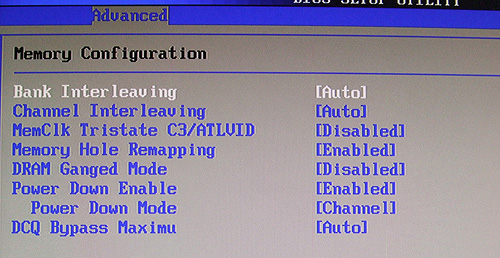 |
| Overclocking Results: |
|
|
ASUS has
maintained a reputation for PC gear overclocks well, so PCSTATS is really
looking forward to overclocking the ASUS M3A78-T motherboard and the new 45nm
Phenom II X3 720 Black Edition CPU, particularly since it's unlocked by
default!
The AMD
Phenom II X3 720 Black Edition runs at a default speed of 2.8 GHz, with its
clock multiplier set to 14x. It can be overclocked by raising the clock
multiplier higher, and then raising the motherboard reference clock speed. For
our purposes, we'll be overclocking by adjusting motherboard clock speed, since
we want to find out how fast the ASUS M3A78-T board will overclock.
Before the overclocking tests got underway, two sticks
of Corsair CM2X1024-6400C4 (CAS4-4-4-12) memory were set
to run at DDR2-800 MHz mode, this way it won't be holding the CPU back. A
standard air cooled AVC Z7U7414001 heatsink was used (see Frostytech's review of it here). The 14x CPU clock multiplier was
set to 8x, and the reference clock speed on the ASUS M3A78-T motherboard then
increased from 200 MHz on up.

Going
from 200MHz up to 240MHz was no problem, but beyond that Windows would crash to
a BSOD on boot-up. Raising the VCore to 1.55V, and the CPU NB/Voltage to 1.4375V
solved that problem, and we were able to continue raising the motherboard's FSB
speed up to 270MHz until the M3A78-T crashed at POST.
Another
voltage tweak brought the DDR2-memory increased the M3A78-T's overclocking
results up to 290MHz, and we left it there. Overall it's a pretty good result,
and a significant jump from what the Foxconn A7DA-S was able to achieve - score 1 for
ASUS!
A quick peek into the BIOS:
The BIOS controls how the motherboard communicates with
all the peripherals connected to it, and is a crucial component for any good
well rounded motherboard. PCSTATS is only going to highlight the tweaking
features so you'll know what to expect.

The manual overclocking page for all ASUS motherboards is
called the JumperFree configuration. It's here that you can manually adjust the
clock speeds for the FSB, set the CPU multiplier and adjust memory speeds and
timings.
CPU voltages can be increased in +25mV increments up to a
total of +375mV. The AMD 790GX northbridge can be brought up to +300mV, and the
DDR2 memory can be increased to +600mV. Remember that these are the maximum
voltages, and power settings this high can damage your motherboard and
components, so be careful before you start adjusting them!

The advanced memory screen lets you configure
some of the more exotic memory settings, while memory timings and frequencies
are set on the JumperFree configuration page. Most of these memory settings will
only be used for troubleshooting purposes or to get very exotic memory working
properly on the ASUS M3A78-T motherboard, so most users can safely leave it
alone.

Here's the Advanced CPU configuration page, where it's
possible to adjust AMD's Cool'n'Quiet (CPU throttling), CIE support (enhance
halt-state) and adjust a few other parameters. Advanced Clock Calibration can
also be turned on thanks to the AMD SB750 southbridge controller. This feature
can increase the overclocking potential of socket AM2+ Phenom CPUs.
Don't bother using ACC if you have a Phenom II processor
installed. This increased functionality is already included with your shiny new
processor.

Here's the configuration page for the internal graphics
controller. Overclock the graphics processor is quite easy, and might give
enough extra performance to warrant some fine-tuned adjustments. It's also
possible to adjust the amount of memory the Radeon HD 3300 uses, as well as
configure HDMI and audio output.
We've opened it up, taken a good look and tweaked it.
But how will it perform on the bench? Check out some of our new benchmarks, just
click the next page...
